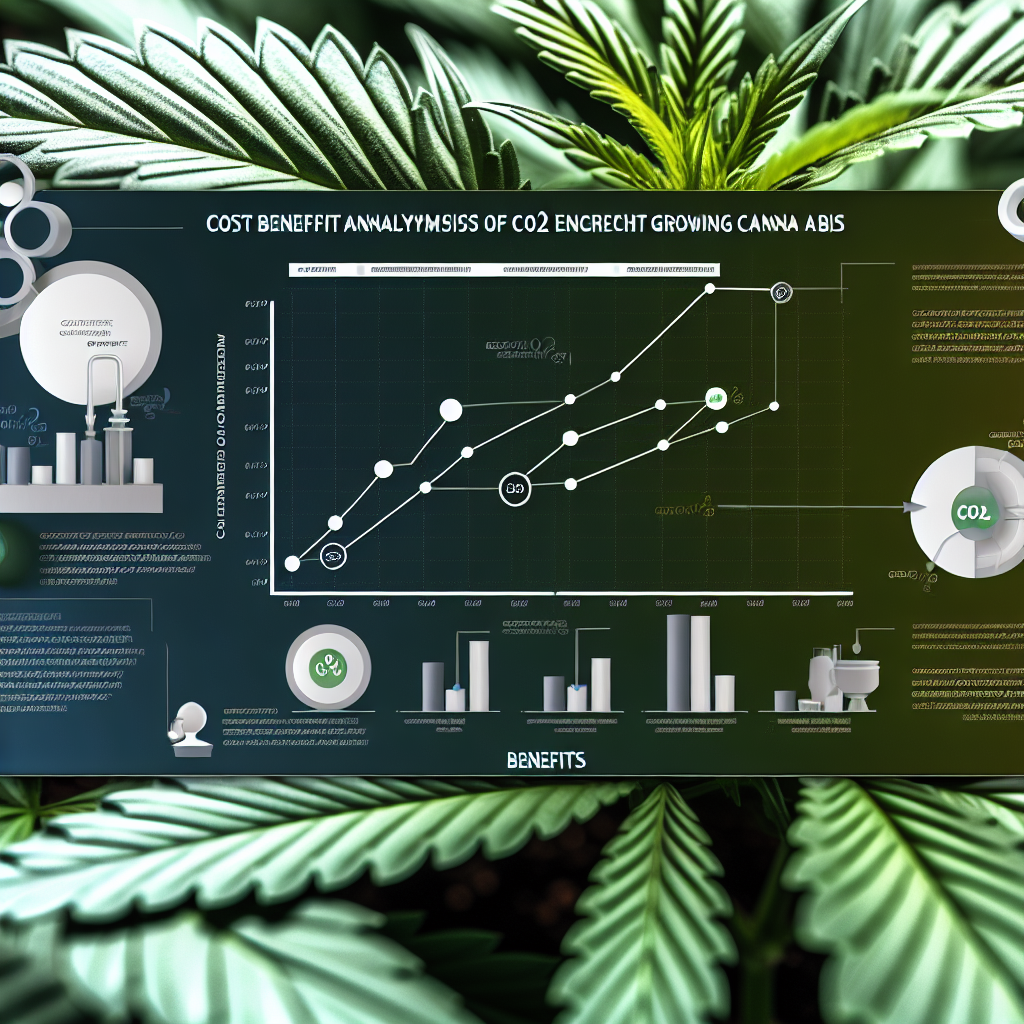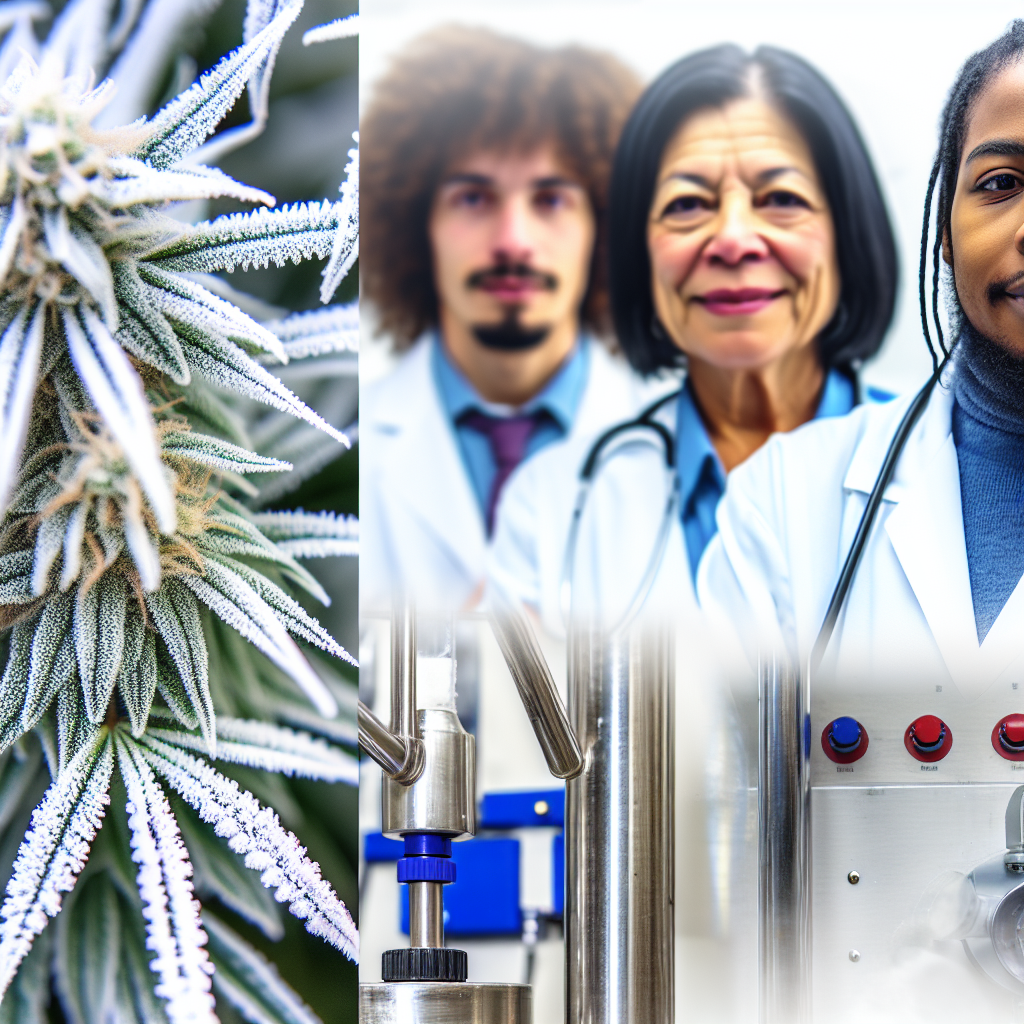CO₂ Enrichment in Cannabis Cultivation: Cost-Benefit Analysis
Introduction: Boosting Cannabis Yields with CO₂ Enrichment
Cannabis cultivation is both an art and a science, requiring growers to optimize environmental conditions to achieve superior yields, potency, and overall plant health. One key factor in this optimization process is carbon dioxide (CO₂) enrichment. CO₂ is essential for photosynthesis, the process by which plants convert light into energy. By increasing CO₂ levels in a controlled grow space, cultivators can significantly enhance plant productivity—but at what cost?
CO₂ enrichment has long been used in commercial agriculture and greenhouse operations for crops like tomatoes and peppers. Over recent years, cannabis cultivators have increasingly integrated this technique into their grow rooms with promising results. Studies and anecdotal evidence suggest that adding CO₂ can lead to faster growth rates, larger flowers, and increased cannabinoid and terpene production. The science behind this is well-documented: under normal atmospheric conditions, plants grow optimally at CO₂ levels of around 400 ppm (parts per million). However, when these levels are elevated to between 1,000 and 1,500 ppm, photosynthesis rates can increase by up to 30%, resulting in faster-growing and more productive cannabis plants.
The costs associated with CO₂ enrichment can be substantial. Expenses include purchasing a CO₂ generator or tanks, monitoring equipment, and implementing proper ventilation systems to maintain a stable environment. Additionally, maintaining elevated CO₂ levels requires careful balancing with temperature, humidity, and light intensity to prevent plant stress. If improperly executed, CO₂ enrichment can produce diminishing returns, making it crucial for growers to weigh the economic investment against the potential increase in yield and quality.
This article explores the cost-benefit analysis of CO₂ enrichment in cannabis cultivation. We will delve into scientific research that supports the efficacy of CO₂ supplementation, examine the expenses involved, and provide insights on whether this technique is a viable investment for small-scale growers and commercial operations alike.
The Science Behind CO₂ Enrichment in Cannabis Cultivation
Research-Backed Benefits of CO₂ Enrichment
Research on CO₂ enrichment in plant growth, including cannabis, has produced compelling results. A classic study published in *Plant Physiology* found that increasing CO₂ levels significantly enhances photosynthesis and biomass accumulation in C3 plants like cannabis ([Taiz & Zeiger, 2018](https://www.ncbi.nlm.nih.gov/books/NBK430982/)).
A more cannabis-specific study conducted by *Coghlan et al. (2021)* investigated the effects of elevated CO₂ on cannabinoid production. The study revealed that cannabis plants grown under CO₂ levels of 1,200 ppm exhibited a 20–30% increase in dry flower weight and an enhanced concentration of cannabinoids like THC and CBD. This indicates that CO₂ not only increases overall yield but may also improve potency.
Further, research from the *American Society for Horticultural Science* found that CO₂ enrichment optimized alongside proper LED lighting and nutrient adjustments can maximize crop efficiency ([Faust & Logan, 2020](https://journals.ashs.org/hortsci/view/journals/hortsci/hortsci-overview.xml)). However, the study emphasized that CO₂ supplementation is only effective when other growth factors, such as temperature and humidity, are also optimized. If the grow environment is not properly controlled, excess CO₂ can lead to inefficiencies or plant stress.
Real-World Results from Commercial Growers
Cannabis industry professionals have reported significant economic benefits from implementing CO₂ enrichment. Commercial growers using advanced hydroponic and aeroponic systems with automated CO₂ regulation have documented yield increases of 20–40%, which often translates to millions of dollars in additional revenue annually. However, smaller-scale growers face challenges in justifying the initial investment, as stringent environmental controls are necessary for maximizing the benefits of CO₂ supplementation.
While CO₂ enrichment is clearly advantageous in many cultivation settings, one must consider the potential drawbacks. Excessive CO₂ exposure without proper ventilation can be harmful to cultivators working in closed environments. Precautions like CO₂ alarms and exhaust systems are essential to ensure worker safety. Moreover, improper application—such as injecting CO₂ during the plant’s dark cycle—results in wasted resources without any notable benefit.
The Costs and Considerations of CO₂ Enrichment
What Are the Expenses Involved?
CO₂ enrichment is not a cheap endeavor. Implementing an effective system involves several costs, including:
– **CO₂ Generators or Tanks** – Growers need to decide between using propane or natural gas burners (which produce CO₂ as a byproduct) or direct CO₂ tanks.
– **CO₂ Monitoring and Controllers** – Maintaining precise CO₂ levels requires digital CO₂ controllers and monitors.
– **Ventilation and Safety Equipment** – Proper airflow, exhaust, and CO₂ alarms are necessary to ensure a safe growing environment.
– **Additional Environmental Management** – CO₂ enrichment often necessitates adjustments in temperature, humidity, and light intensity to prevent plant stress.
Return on Investment for Growers
The economic viability of CO₂ supplementation depends on a grower’s scale and setup. For large-scale commercial operations, the investment in CO₂ enrichment can lead to substantial yield increases, translating into higher revenues. Some commercial growers report a nearly 40% increase in profits due to the higher volume of sellable cannabis and improved cannabinoid production.
For small-scale growers, the return on investment may not be as clear-cut. The costs of purchasing and maintaining CO₂ systems may outweigh the benefits, especially if environmental conditions are not optimally controlled. Small-scale growers should conduct thorough cost-benefit analyses before proceeding with CO₂ supplementation.
Conclusion: Is CO₂ Enrichment Worth It?
CO₂ enrichment in cannabis cultivation offers substantial benefits when applied correctly, including increased yield, faster growth, and potentially higher potency. However, the costs associated with purchasing equipment, monitoring conditions, and maintaining a controlled environment must be carefully assessed.
Scientific research supports the efficacy of CO₂ supplementation, but it remains a technique best suited to growers who can maintain optimal environmental parameters. For large-scale commercial operations, CO₂ enrichment presents a strong return on investment. For small-scale growers, the decision requires weighing costs against potential gains.
By understanding both the scientific and economic implications, cannabis cultivators can make informed choices to enhance their operations effectively.
Concise Summary:
CO₂ enrichment can significantly boost cannabis yields, plant growth, and cannabinoid production when applied correctly. However, the costs of implementing and maintaining a CO₂ system must be carefully weighed against the potential benefits. Large-scale commercial growers may see a strong return on investment, while smaller-scale cultivators face more challenges in justifying the upfront expenses. Overall, CO₂ enrichment is a valuable technique, but it requires optimizing the entire grow environment to maximize the gains.
Reference Hyperlinks:
[Taiz & Zeiger, 2018](https://www.ncbi.nlm.nih.gov/books/NBK430982/)
[Faust & Logan, 2020](https://journals.ashs.org/hortsci/view/journals/hortsci/hortsci-overview.xml)
[Coghlan et al. (2021)](https://www.researchgate.net/publication/350529874_Effects_of_elevated_CO2_on_cannabis_production)




